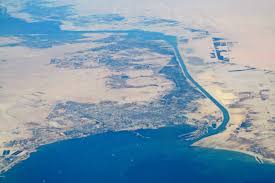
Elementary, my dear Watson! The Suez Canal, a seemingly simple waterway, holds the key to understanding the very lifeblood of global trade. As a consulting detective with a keen eye for detail, I, Sherlock Holmes, have delved into the murky depths of information surrounding this vital passage.
A Shortcut Steeped in History
Imagine, Watson, a world where journeys between Europe and Asia required a perilous voyage around Africa’s southern tip, the Cape of Good Hope. This arduous route added weeks, even months, to travel times. Enter the ingenious Ferdinand de Lesseps, a Frenchman with a vision. In 1854, construction began on the Suez Canal, a 193-kilometre marvel that sliced through the Egyptian desert, connecting the Mediterranean and Red Seas. This feat of engineering, completed in 1869, revolutionized global trade.
The Efficiency Engine
The brilliance of the Suez Canal lies in its efficiency. Consider this, Watson: ships traversing the canal bypass a staggering 7,000 kilometres. This translates to significant cost savings on fuel, crew wages, and overall voyage time. The canal serves as a maritime shortcut, a time machine for global commerce.
A Global Trade Artery
The statistics themselves are a testament to the canal’s importance. Around 12% of global trade, a staggering $1 trillion worth of goods annually, flows through this vital artery. Think of it, Watson, as the aorta of the world’s economic system, carrying the lifeblood of commerce. Over 19,000 ships traverse the canal each year, a daily ballet of container ships, tankers, and bulk carriers.
Fueling the World’s Needs
The Suez Canal isn’t just about manufactured goods, Watson. It plays a crucial role in energy security. An estimated 7-10% of the world’s oil and 8% of liquefied natural gas travel through this passage. Imagine, a disruption here could create a ripple effect across the globe, impacting energy prices and industrial production.
Beyond the Obvious
But the canal’s significance goes beyond mere numbers. It’s a symbol of international cooperation and a testament to human ingenuity. The canal’s authority, the Suez Canal Authority (SCA), meticulously manages this vital waterway, ensuring smooth and safe passage for vessels of all nations.
A Chink in the Armor?
However, even the most vital organs have vulnerabilities. The 2021 grounding of the Ever Given, a mega-container ship, brought the world’s attention to the canal’s potential chokepoint. This incident highlighted the need for continuous improvement in infrastructure and traffic management. The SCA, ever vigilant, has invested in expansion projects to accommodate ever-larger vessels.
The Future Unfolds
The future of the Suez Canal appears bright, Watson. Global trade is projected to continue its upward trajectory, and the canal will remain a vital link. The SCA is exploring further expansion and technological advancements to maintain its position as the premier maritime shortcut.
A Final Deduction
The Suez Canal, in its elegant simplicity, is a marvel of human ingenuity. It’s a testament to the power of international cooperation and a cornerstone of global trade. As the world becomes increasingly interconnected, the Suez Canal will undoubtedly continue to play a vital role in shaping our economic landscape.
The game is certainly afoot, Watson. The Suez Canal, a seemingly simple waterway, reveals itself to be a complex and fascinating cog in the intricate machinery of global trade.



